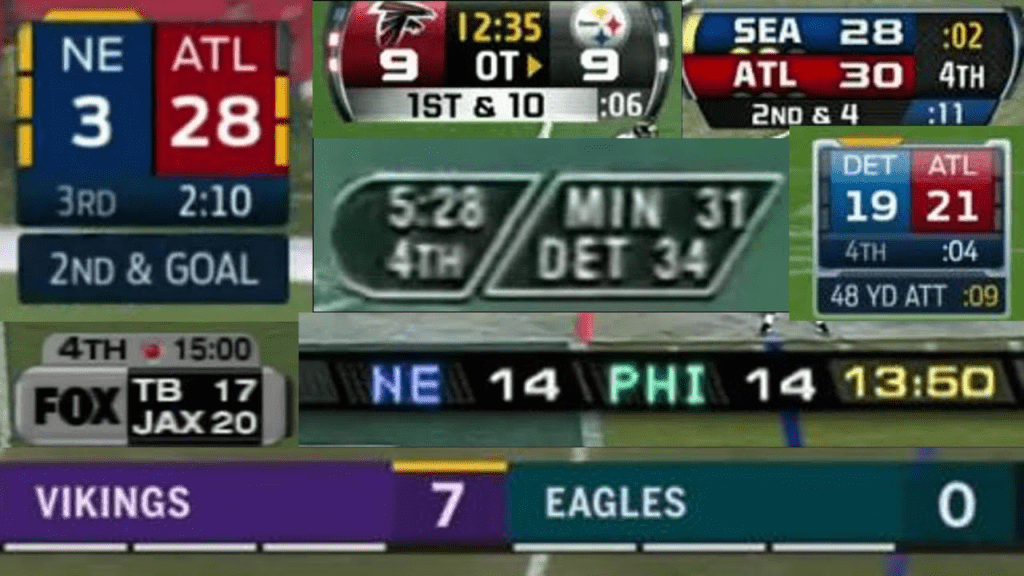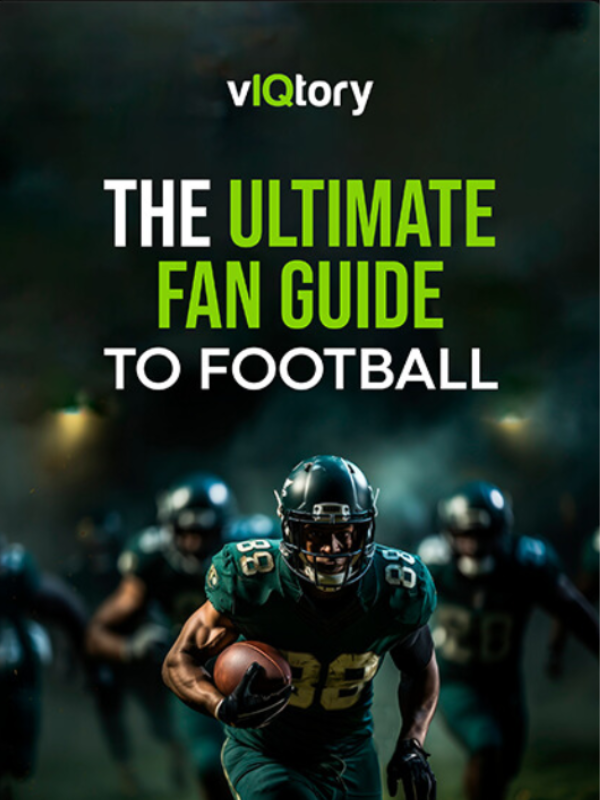Football, unlike other sports, has a stoppage after every play. This stoppage is known as downs, or chances the offense has to get 10 yards. So what is a down in football, and why does it matter?
A down in football is how many chances the offense gets to extend their drive. The offense gets 4 downs to get 10 yards. If the offense moves the ball past 10 yards, then they get another 4 downs. If they don’t, they turn the ball over to the other team.
This article will show you what downs in football are and why they are so important to the overall structure of the game.
What Is a Down In Football?
Football is a unique sport because it has a start and stoppage after each play. Each play typically lasts only 6 seconds. Unlike other sports like basketball and soccer, football referees will blow the whistle when a player is tackled, which then the referee will signal the down to change.
The offense will always start with first down and ten yards to go. If you look on the sideline, you will see a down marker with the number 1 on it, and two other markers that are exactly 10 yards long. These markers are held by referees who are known as the chain gang.
If you’re watching football on tv, it’s common to see the down and distance at the bottom of the screen. Here is an example of many types of scoreboards you may see on TV. Notice some of them feature the down and distance.

Now that you know where to look for the down and distance, let’s learn how downs work throughout the game.
Offensive Team
The offensive team in football has a set of four downs to get 10 yards. When they receive the football from a kickoff and get tackled, the drive will automatically start 1st and 10. This means the offense is on its first chance to get 10 yards, while the opposing team is trying to stop them.
The best way to think of downs is to think of chances. First down means the team is on their first chance to get 10 yards. If the team gains yards, the referee will signal the down marker referee to move where the ball is spotted.
For example, if the offense runs the football and gets no yards on the first down, then it will be 2nd and 10 on the next down. If the team again runs the football and gains no yards, it will be 3rd and 10.
If on 3rd down, the team gains no yards again, then it will be 4th and 10. This is the offense’s last chance to try to get 10 yards. Teams will often punt the football on fourth down if they feel as if they cannot get 10 yards.
This is the cycle of how football works until a team scores in the opposing team’s end zone. Once they score a touchdown, they will try to kick an extra point, and the opposing team will take possession of the ball.
To learn more about the flow of the game, watch this video here:
Defensive Team
The defensive team in football has the tough task of stopping the offense from getting 10 yards in four downs. It’s important that the defense holds the offense to not getting a first down because they want to give their offense a great field position to start with.
In American Football (similar to rugby), field position is everything. If the defensive can stop the offensive team from getting past the first down line, it will give their football team a better chance to score three points (with a field goal) or a touchdown (worth six points) and win games.
Most offensive teams are able to get a first down. However, it is very hard to get into the end zone for a touchdown. This is why many teams have turned to throwing the football downfield to a wide receiver, rather than trying to run the football.
Defenses may also get penalized, which gives the offense free yards. We wrote more about defensive penalties here.
Ready To Increase Your Football IQ?
Why spend hours on Google and YouTube trying to learn football yourself? We’ve created a simple guide that will make you the smartest person in the room.
Special Teams
On fourth down, the offense can choose not to run a play, but rather bring on their punt team. Typically teams will elect to do this because field position is much more important than trying to extend the drive.
Instead of running a pass play or run play on fourth down, and risking giving the other team possession of the football with good field position, teams will bring out their punter.
Punting is when the offense kicks the football as far as they can down the field, in hopes they can tackle the returner with a better field position. It’s common to see a team on fourth down punt the football to the other team.
In short yardage situations, it’s common for teams to go for it on fourth down, but it all depends on the coach’s philosophy and if there are eight yards or two yards to go. The number of yards and the downs create a new scenario for every play for coaches.
Football Chains
Every first down, the chains are reset to extend 10 yards. Two referees will hold the two chains as tight as possible, which equals out to 10 yards.
This is the distance the offense must travel to get a 1st down. The defense must keep the offense from reaching past the second chain marker, allowing the offense to get the first down.
Football relies on 11 offensive players working in unison to gain those 10 yards. Teams ultimately want to get past those 10 yards and get into the endzone for a touchdown. But bare minimum, they are trying to get a first down.
Whenever the ball is, there is an imaginary line that spans from sideline to sideline, that neither player can cross unless the ball is snapped. This imaginary line is called the line of scrimmage.
Downs start when the football is snapped and the offense makes an attempt of forward progress to cross the line of scrimmage.
It’s the job of the ball carrier to help get the offense to their next play and get a first down. In the best-case scenario, they will cross the opponent’s goal line.
Ready To Increase Your Football IQ?
Why spend hours on Google and YouTube trying to learn football yourself? We’ve created a simple guide that will make you the smartest person in the room.
Down Marker
The down marker is typically the numbered marker you see on the sideline. This is sometimes a flip marker, or it can be digital. Regardless, it will display a number, 1-4, which tells the coaches, players, and fans which down it is.
This first down marker is important because the coaches calling the plays need to know what it is. Each down and distance has its strategic advantage for both the offense and the defense. Teams will try to gain as many yards as they can on first and second down to make third and fourth down less stressful.
Coaches will gameplan each down and each distance against the defense they’re playing against. Each scenario will have a play call attached to it.
Why Is Down & Distance Important In Football
Understanding the down and distance in football is the key strategy in football. Coaches need to gameplan properly and remain calm when coaching the game. This helps them think clearly and choose the right situation on gameday.
Football is all about calling the right play and executing when the time is right.
Down and distance is essential because if the players don’t execute properly, they could put themselves in non-favorable situations.
For example, if teams are consistently in 3rd and 5+ situations, there’s almost a guarantee that they will throw the football. This allows defenses to be more aggressive and blitz the quarterback rather than worry about the run.
Keep Learning
1st and 10 means the offense is on their first chance to gain 10 yards. If they can gain the 10 yards, then it will be first down again. Teams will try to gain 10 yards down the field until they score a touchdown.
If you liked learning about down and distances, we recommend you check out our Beginners Guide To Football below. It has everything you need to improve your football IQ.
Let’s keep learning! Our learning center is packed with information regarding techniques, schemes, and more!
If you’re looking for more in-depth breakdowns & coaching resources, visit our coaching resource page here.
This has been our short article on learning about down and distances, such as 2nd and 10.
If you enjoyed this article, make sure to check out some of our other articles on speeding up your learning process.





